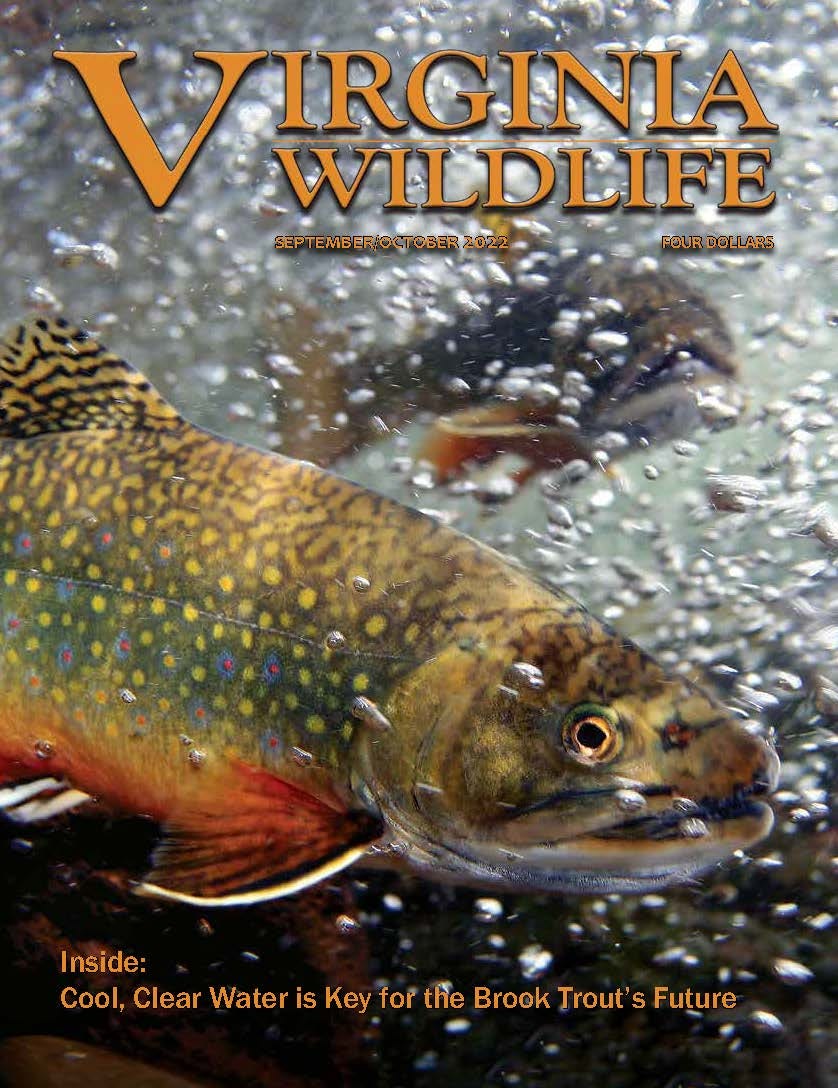There is good news for brook trout anglers. The Dry River is looking good. Fished there Friday, Sept. 09, and the water level and temperature were better than expected. I wouldn’t hesitate to get out there.
In the meantime, here is some brook trout related info for you desk bound anglers.
Virginia Wildlife cover story
Virginia’s brook trout is the cover story in the latest edition of Virginia Wildlife. Cool, Clear Water is Key for the Brook Trout’s Future by Virginia Department of Wildlife Resources’ Molly Kirk is a wide-ranging look at the challenges Virginia’s state fish and only native trout, faces.
DWR’s fish chief, Mike Bednarski, puts it this way:
We have a variety of concerns about what’s going to impact brook trout. In addition to stream temperatures warming, there are also concerns about habitat conditions and degradation and a variety of other factors. It can be death by a thousand cuts. The difference between stress and lethal is a fine line. The fish can handle stressful temperatures at some level, but if you have other factors being put into place, it compounds and you can see sub-lethal effects even if the water isn’t at lethal levels of warmth.
The path forward? Bednarski says:
We really believe that the best strategies involve habitat restoration—stream shading, maintaining stream integrity, restoring fish passage—to help reduce the impact of increased thermal stress on those water bodies. If we help keep them cooler, it will help to maintain brook trout populations.
In the next couple of years, I plan to spend a fair amount of my free time, not only fishing for these jewels but working to see that my grandchildren and their grandchildren can fish for them as well.
You can read more of Kirk’s article here.
DWR’s Wild Trout Management Plan
In Kirk’s article, she refers to the DWR’s Wild Trout Management Plan. This 10-year plan, released in 2018, is an excellent resource. The plan:
Summarizes the history of wild trout management in Virginia
Provides a blueprint for future management directions.
Establishes a framework of what needs to be done for wild trout,
How it should be done, and
When it should be done.
It’s a dynamic document that can respond to new information and changing conditions. If you are interested in brook trout in Virginia, this is a good document to have at hand. A quick look at the table of contents will direct to a variety of helpful info about brookies. Give it a look.
Southern Appalachian brook trout
Last, but by no means least, my friend Will Brown penned a delightful article, Saving Southern Appalachian Brook Trout, for the Marine Fish Conservation Network’s From the Waterfront blog. Brown is an inveterate outdoorsman, Episcopal priest and terrific writer as you will find out when you read his article.
The rest of our week in the mountains was spent similarly. It wasn’t until we returned home that our hosts informed us that the stream where we spent that splendid afternoon of day-2 happens to be a haven for North Carolina’s only native trout species, the Southern Appalachian brook trout. I had contemplated bringing fishing gear with me, but decided against it, not wanting to add another dimension of logistical complexity to our trip. Hindsight is 20/20. I have never caught a Southern Appalachian brookie, and now it maintains its position among the potentials on my “bucket list.”
If you are interested in more of Brown’s writing, I heartily recommend his book, A Catechism of Nature, available from the publisher or finer bookstores.
That’s it for now. Enjoy your early fall fishing!







